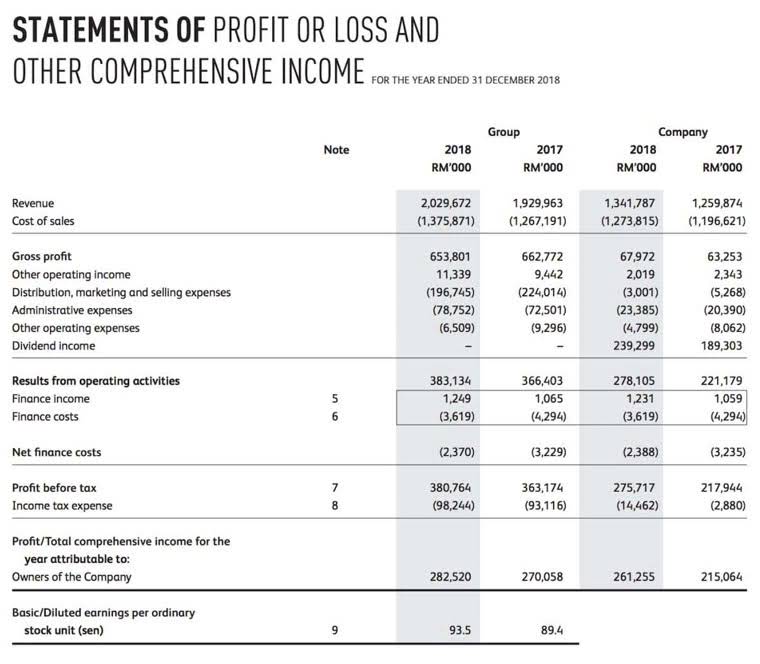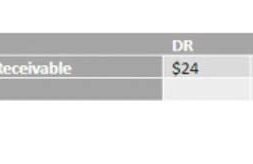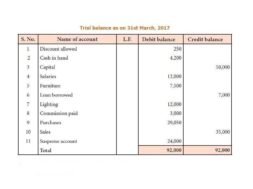Retained Earnings: Calculation, Formula & Examples Bench Accounting

After reviewing the feedback we received from our Explanation of Debits and Credits, CARES Act I decided to prepare this Additional Explanation of Debits and Credits. In it I use the accounting equation (which is also the format of the balance sheet) to provide the reasoning why accountants credit revenue accounts and debit expense accounts. A statement of retained earnings is a formal statement showing the items causing changes in unappropriated and appropriated retained earnings during a stated period of time. Changes in unappropriated retained earnings usually consist of the addition of net income (or deduction of net loss) and the deduction of dividends and appropriations. Changes in appropriated retained earnings consist of increases or decreases in appropriations.
How Do You Figure Retained Earnings?
- On one hand, high retained earnings could indicate financial strength since it demonstrates a track record of profitability in previous years.
- A contra account contains a normal balance that is the reverse of the normal balance for that class of account.
- A statement of retained earnings details the changes in a company’s retained earnings balance over a specific period, usually a year.
- The “Retained Earnings” line item is recognized within the shareholders’ equity section of the balance sheet.
- However, the past earnings that have not been distributed as dividends to the stockholders will likely be reinvested in additional income-producing assets or used to reduce the corporation’s liabilities.
- Shareholders, analysts and potential investors use the statement to assess a company’s profitability and dividend payout potential.
- The prior period balance can be found on the opening balance sheet, whereas the net income is linked to the current period income statement.
In other words, the Bookkeeping for Consultants temporary accounts are the accounts used for recording and storing a company’s revenues, expenses, gains, and losses for the current accounting year. The amount of retained earnings that a corporation may pay as cash dividends may be less than total retained earnings for several contractual or voluntary reasons. These contractual or voluntary restrictions or limitations on retained earnings are retained earnings appropriations. For example, a loan contract may state that part of a corporation’s $100,000 of retained earnings is not available for cash dividends until the loan is paid. Or a board of directors may decide to use assets resulting from net income for plant expansion rather than for cash dividends. If retained earnings represent retained income (or loss, if negative), why it is not reported on the income statement?
How Net Income Impacts Retained Earnings

Retained earnings is an equity account, and like most other equity accounts, it increases with credit entries and decreases with debit entries. At the end of the period, you can calculate your final Retained Earnings balance for the balance sheet by taking the beginning period, adding any net income or net loss, and subtracting any dividends. For this reason the account balance for items on the left hand side of the equation is normally a debit and the account balance for items on the right side of the equation is normally a credit. Any item that impacts net income (or net loss) will impact the retained earnings.
AccountingTools

Likewise, the net income will increase the retained earnings while the net loss will decrease the retained earnings as the result of the journal entry. On the other hand, the increase or decrease of retained earnings with prior period adjustment will depend on whether the company has understatement or overstatement of prior period net income before the adjustment. This line item reports the net value of the company—how much your company is worth if you decide to liquidate all your assets. Retained earnings are a clearer indicator of financial health than a company’s profits because you can have a positive net income but once dividends are paid out, you have a negative cash flow. When distributions are declared by a company, the amount that will be paid as dividends to its shareholder is usually taken out of its retained earnings account on the date of the declaration.
- A debit balance, on the other hand, would indicate that the company has accumulated net losses or has declared more dividends than its accumulated earnings.
- Retained earnings could be used to fund an expansion or pay dividends at a later date.
- Observing it over a period of time (for example, over five years) only indicates the trend of how much money a company is adding to retained earnings.
- Accounts are the bookkeeping or accounting records used to sort and store a company’s transactions.
- Thus, they do not have sufficient patronage to ensure their profitability yet.
- In other words, the permanent accounts are the accounts used to record and store a company’s amounts from transactions involving assets, liabilities, and owner’s (stockholders’) equity.

This, of course, depends on whether the company has been pursuing profitable growth opportunities. Retained earnings are the cumulative net earnings or profits a company keeps after paying dividends to shareholders. Dividends are the last financial obligations paid by a company during a period. “Retained” refers to the fact that those earnings were kept by the company.
- At least not when you have Wave to help you button-up your books and generate important reports.
- On the other hand, the increase or decrease of retained earnings with prior period adjustment will depend on whether the company has understatement or overstatement of prior period net income before the adjustment.
- Retained earnings are the profits that a company has earned to date, less any dividends or other distributions paid to investors.
- First, you have to figure out the fair market value (FMV) of the shares you’re distributing.
- Hopefully this will give you a deeper understanding of the terms debit and credit which are central to the 500-year-old, double-entry accounting and bookkeeping system.
The level of retained earnings can guide businesses in making important investment decisions. If retained earnings are low, it may be wiser to hold onto the funds and use them as a financial cushion in case of unforeseen expenses or cash flow issues rather than distributing them as dividends. However, if both the net profit and retained earnings are substantial, it may be time to consider investing in expanding the business with new equipment, facilities, or other growth opportunities. Income summary is a temporary account that is used at the end of the period to close all income and expenses in the income statement. In other words, all income goes to the credit of income summary while all expenses go to the debit of income summary resulting of the net amount in the income summary account as net income or net loss. The company can make the retained earnings journal entry when it has the net income by debiting the income summary account and crediting the retained earnings account.

Retained earnings debit and credit journal entry for profits

In accounting software like QuickBooks, what is retained earnings QuickBooks refers to the does retained earnings have a credit balance account used to track the retained earnings of a business. This account automatically updates at the end of each fiscal year, reflecting the net income or loss that has been retained. These programs are designed to assist small businesses with creating financial statements, including retained earnings. It is a key indicator of a company’s ability to generate sales and it’s reported before deducting any expenses. Generally speaking, a company with more retained earnings on its balance sheet is more profitable, since higher retained earnings represent more net earnings and fewer distributions to shareholders (and vice versa).






